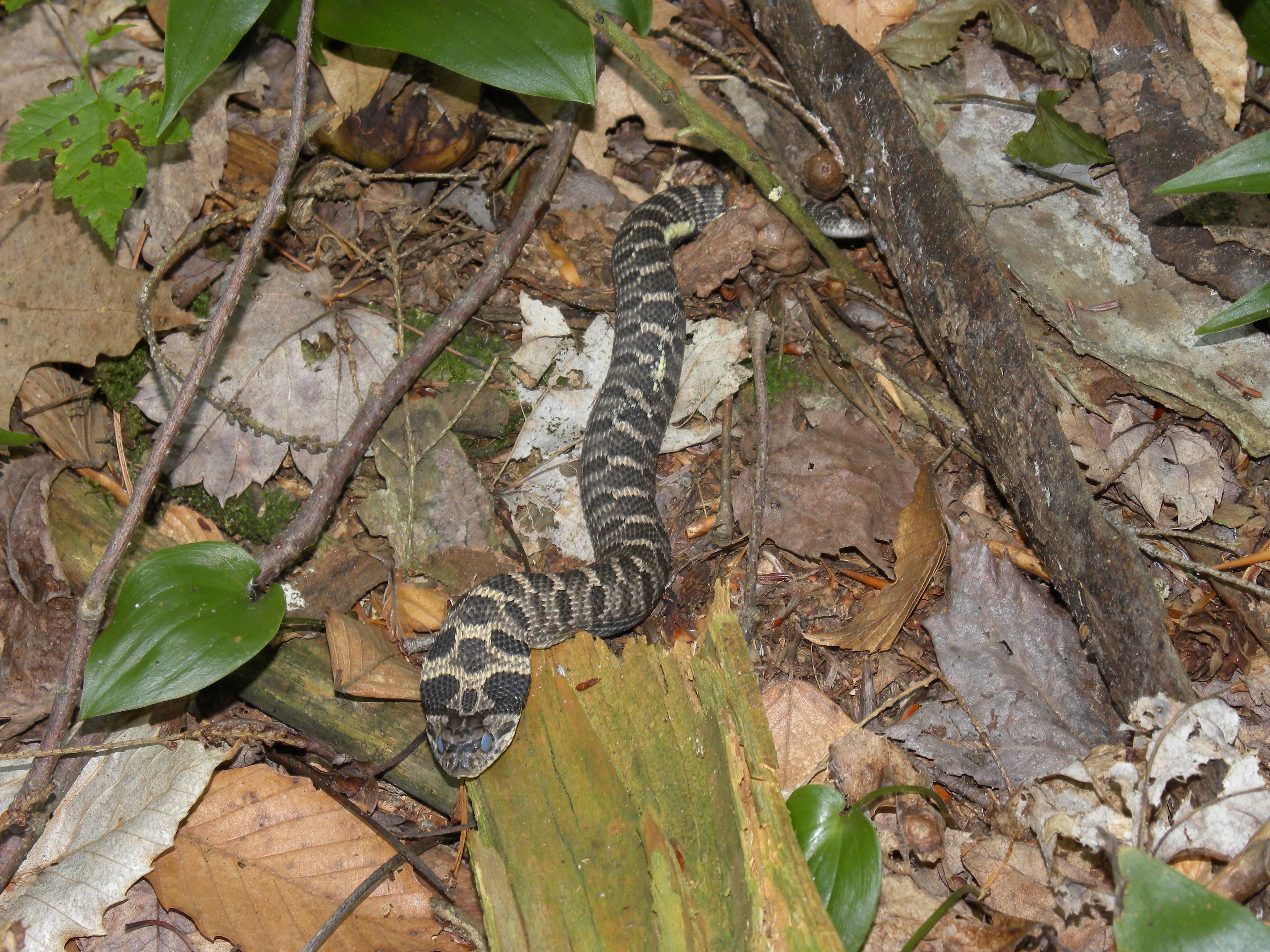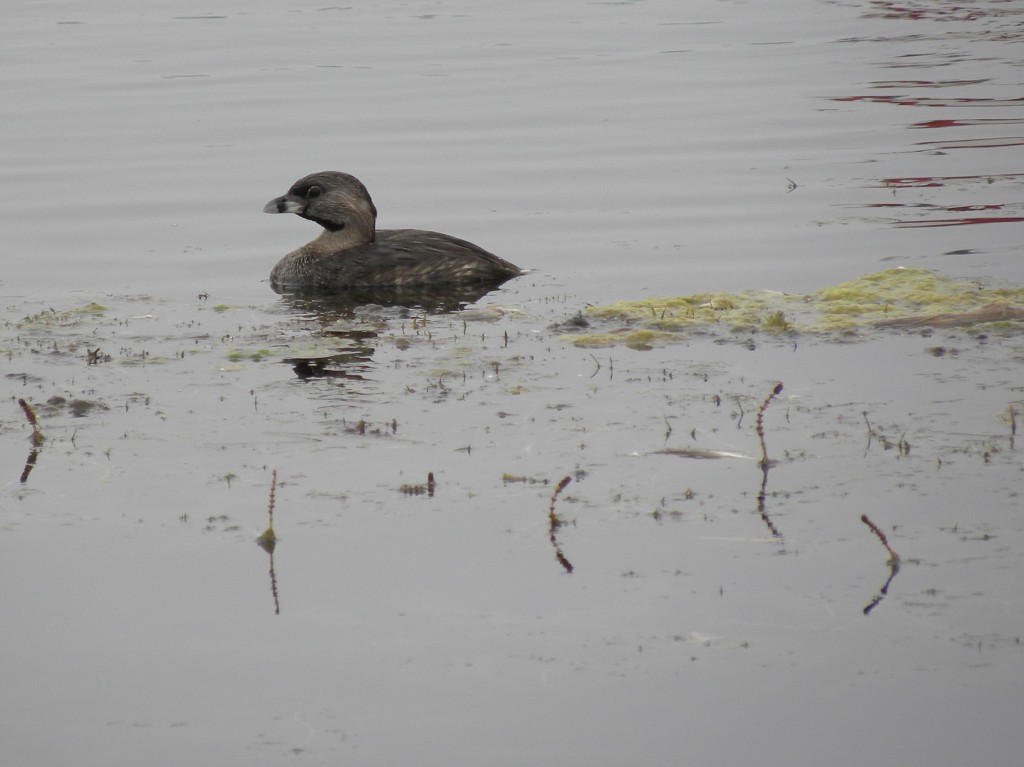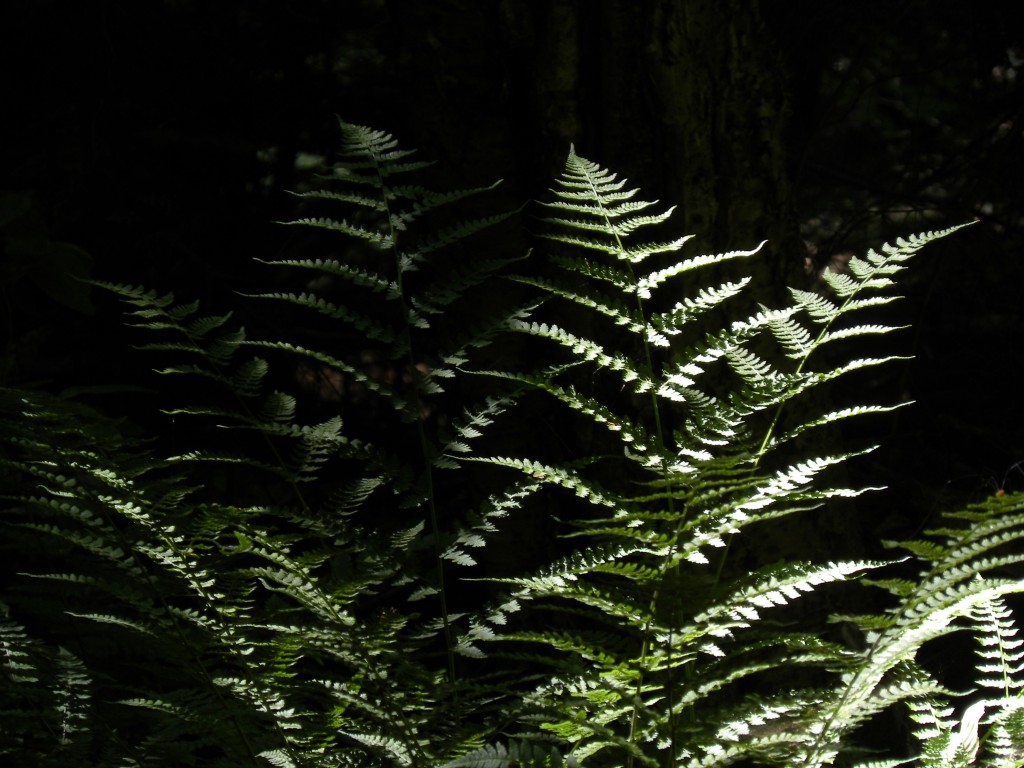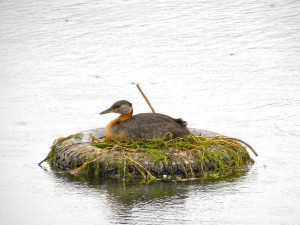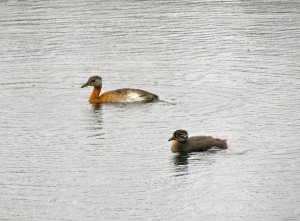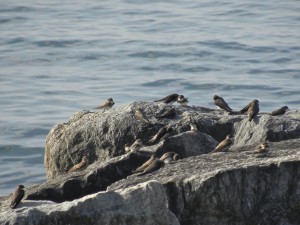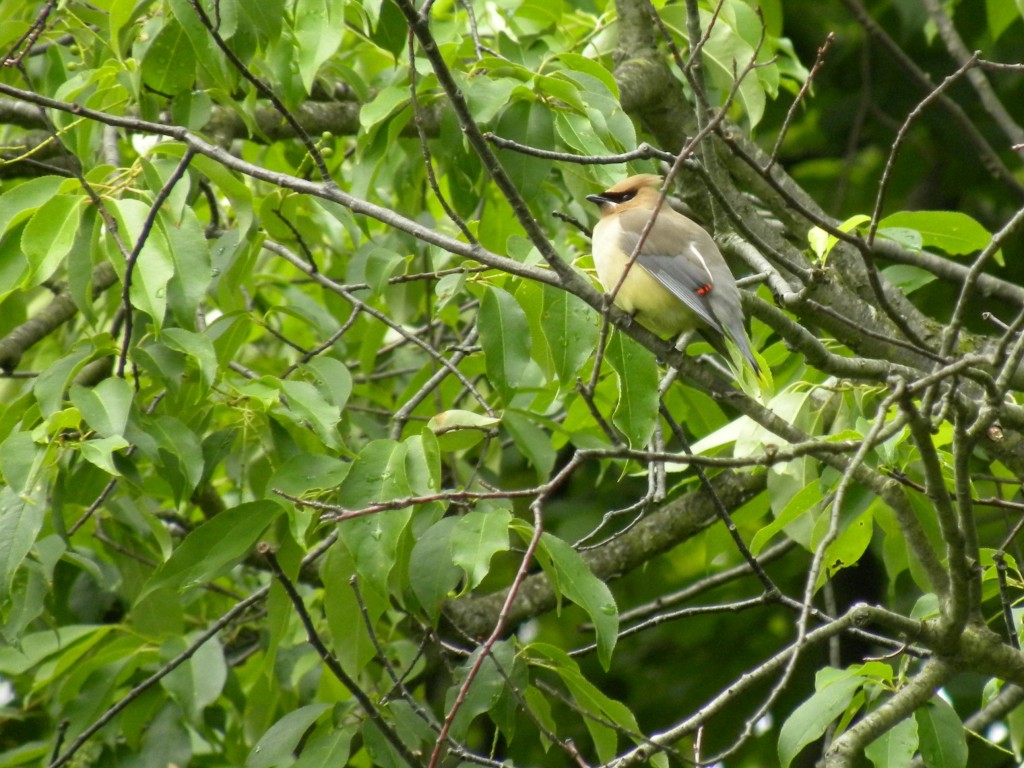July 13, 2012. In truth no bird was the undoubted star of today’s field trip. My companion & I went looking for shorebirds at our first stop and forest birds at the second. Our destinations were both close to a small town that has become a Mecca for heavy-duty motorcyclists every Friday the 13th; whatever the month. And today being an idyllic mid-summer Friday all area roads were heavy with legions of growly Harley Davidsons .
At the end of our day as we drove home and into a large thunder storm which had forced dozens of motorcyclists to seek shelter beneath every highway bridge along the way, we weighed alternatives for bird of the day. For her it was a small family of Wood Ducks that we’d startled and who rowed furiously away from us in a panic-stricken scramble. For me, I was undecided between: a Hooded Warbler, heard but not seen in a shady forest; a spectacular adult Bald Eagle flying lugubriously along the Lake Erie shoreline as we ate lunch; a Caspian Tern that patrolled that same stretch of shoreline in their characteristic brigandish manner or; a smart Horned Lark almost lost among a flock of young Red–winged Blackbirds feeding busily in a weedy field. I think I go for the Caspian Tern; they’re so in control, almost piratical in the way they patrol the lake ready to strike and never taking hostages.
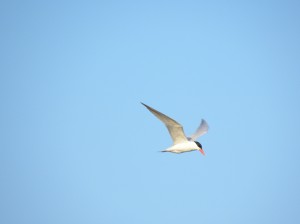
But the sighting of the day for both of us was a young and not very large Eastern Hognose Snake found in deep leaf litter in the forest and which hissed loudly at my companion lest she commit some indignity upon it. I had never seen one before so was really fascinated to study it and watch it feign mild aggression. They are not a venomous snake but rely on some interesting defensive tactics: they spread a hood rather like a cobra, hiss softly and try a few fake strikes (albeit with closed mouth). And if that doesn’t send you packing they’ll sometimes roll over and play dead.
Hognose Snakes are slow moving; they prey mainly on toads so speed is hardly necessary. Far from being intimidating we found this one rather engaging and had plenty of time to admire it and its beautiful markings. Not everyone likes pictures of snakes but here it is for those that do.
